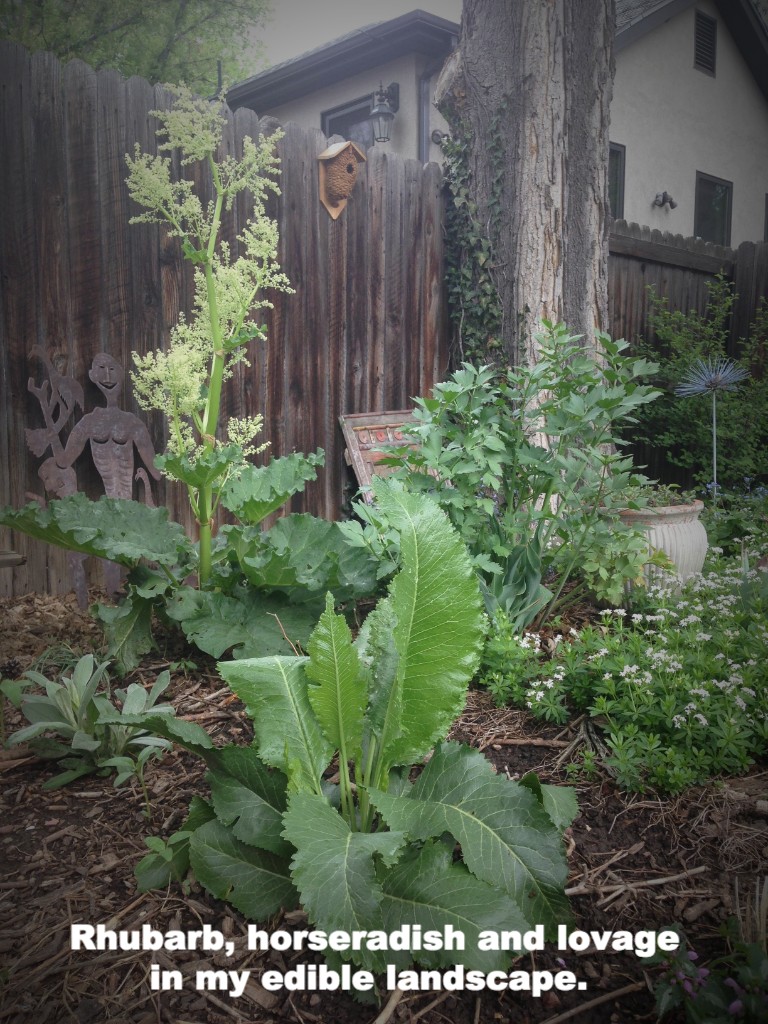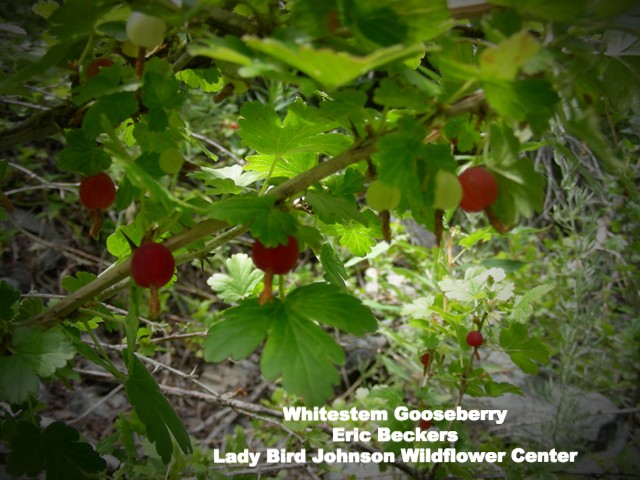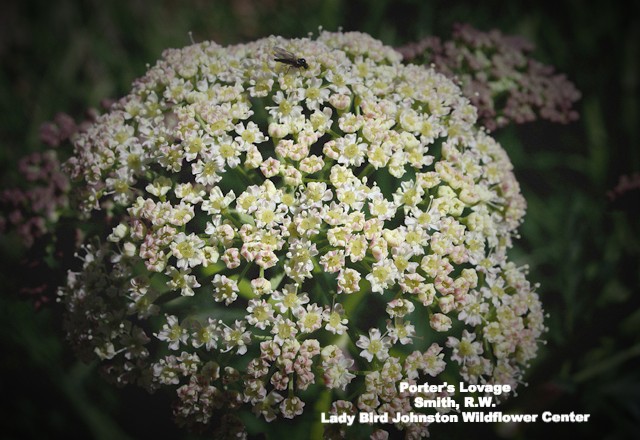By Deb Lebow Aal
When I mention the word “garden” to people, I often get “oh, I love tomatoes and cucumbers. I always have a garden!” It didn’t occur to me untill recently that I should use the word yard or landscape, if I want to go beyond tomatoes, or beyond a typical vegetable plot in your yard. There’s nothing wrong with tomatoes and cucumbers, or a separate vegetable plot, but we can do better. There are so many edibles you can plant that are not so thirsty, and support the ecosystem.

I know this is an article about edible native plants, but before getting to that, I want to note that if you want things that taste like tomatoes and cucumbers, there are no native alternatives I know of (I’m hoping to get comments that I am wrong!). So, I feel compelled to include some non-natives that do well with our dry temperamental climate. These drought-tolerant, no fuss perennials do not require raised beds, or separate areas, and, for the most part, look beautiful in your yard. They still are not tomatoes and cucumbers, but they’re delicious too. There are a few annual vegetables that also do well here that I’ll mention, and then we will get to the natives.
I know if you are reading this article, you have some idea of why planting native plants in your garden is important, but I always want to remind folks why. We have an opportunity to use our land for more than just a lawn or beautiful garden. We have an opportunity to use our property to support wildlife and biodiversity. We can heal the earth, one yard at a time! Insects are a vital component to a healthy ecosystem, and native plants support more insect populations, which support birds, and… you get the picture. Natives are preferable, but we still may want to feed ourselves.

Perennial edibles that do well in my garden, but that are not native, include: sea kale (cranbe maritime), goji berries, chives, horseradish, sorrel, rhubarb, lovage, nanking (sour) cherries, mint, grapes, gooseberries, currants, and hops. In addition, my plum and apple trees do well here when we don’t have a late frost or snow storm. I do not have direct experience with this, but there is a peach tree at the Denver Botanic Gardens (‘Reliance’ peach), which they call an “almost” native, which supposedly does well here.
Perennials are better plants than annuals, which is why I concentrate on perennial edibles in my yard. Perennials improve the soil in which they sit. They add nutrients through their extensive root systems, whereas annuals deplete the soil (of course, there are always exceptions). They are also a heck of a lot easier on the gardener – for the most part, they take care of themselves. My favorite, sea kale, has such a long taproot that when I moved some, I doubled the number of plants I have, as the original plants came back. I love plants like that! You cannot kill them, they’re edible, improve the soil, and are beautiful!
Un-fussy annual vegetables that do well in my garden, which does not have an irrigation system (I am the watering system which means I commune regularly with each and every plant of mine), include: spinach (I have a self-seeding variety given to me by a friend that spreads easily and I believe is malabar spinach, but I could be wrong)), dinosaur kale, Egyptian onions (I am not sure if this is the same thing as walking onions, Allium cepa proliferum, but they sure do “walk” all over the yard); arugula, parsley, cilantro, cabbage, broccoli, kohlrabi, and radishes. None of the non- native plants I’ve mentioned require as much water as tomatoes and cucumbers, and they flourish here, so I think they’re much more than a cut above.
Okay, I know most of that is blasphemy for native purists. We have lots of native plants that are edible, plants that can be added to your landscape to support native insects and birds in addition to providing some sustenance for humans. In my very humble opinion, I think you’d be eating these only if you were in survival mode, but maybe your tastes are more evolved than mine (or less?). There are whole books dedicated to the topic of edible natives.

And, Front Range Wild Ones had an event entitled Landscaping with Edible Plants, in 2014. Here is a handout from that event put together by Brian Elliot.* It is excellent. I have put together an additional list of plants native to the Front Range that are edible, and that are nice additions to your garden – I mean landscape. Noted next to each plant name are the parts of the plant that are edible. And – here is the legal disclaimer – if you are not really familiar with these plants and are trying to guess which ones they are, please do not eat them! There are plenty of plants out there that are not edible that could cause you headaches, stomach aches, or worse…. **
Plants Native to Colorado’s Front Range that are Edible and Lovely in a Landscape:
(in addition to the plants listed in the handout)
Achillea millefolium (yarrow): leaf
Allium (wild onions): whole plant
Archtostaphylos uva-ursi (kinnikinnick): berry
Artemesia (sagebrushes): seed and leaf
Asclepias speciosa (showy milkweed): immature seed pod, young shoot, young leaf, flower bud
Eriogonum subalpinum (subalpine buckwheat): stem and seed
Eriogonum umbellatum (sulphur flower): stem and seed
Geranium richardsonii (richardson’s geranium) leaf and flower
Geranium viscosissimum (sticky geranium) – leaf and flower
Humulus lupulus var. neomexicanus (hops): male flower, young shoot, seed
Juniperus communis var. Montana (juniper): berry and leaf
Linum lewisii (flax): seed
Monarda fistulosa (bee balm): leaf and flower
Oenothera spp (evening primroses): young seed pod, flower, young root
Prunus virginiana: (chokecherry) berry
Quercus gambelii (gamble oak): acorn
Ribes spp (currants and gooseberries): berries
Rubus idaeus (raspberry): berry
Sedum spp (All types of sedum): flower, young leaf
Solidago (goldenrod): leaf, flower, young greens
And, as always, please email me with comments or plants I’ve overlooked that are edible, native, and lovely in a landscape.
*Brian Elliot is a botanist consultant, and the author of “Handbook of Edible and Poisonous Plants of Western North America,” available on Amazon.
** Another disclaimer – It is not a good idea to collect these plants from open space, national forest lands, parks, or really any area that is not yours, without express permission. There are laws and ethics that apply to “collecting” specimens.
**All photos are curtosey of the Lady Bird Johnson Wildflower Center
Curious to learn more about transforming your garden into a habitat with Colorado native wildflowers, grasses, shrubs, and trees? Check out our native gardening toolkit, register for an upcoming event, subscribe to our newsletter, and/or become a member – if you’re not one already!
